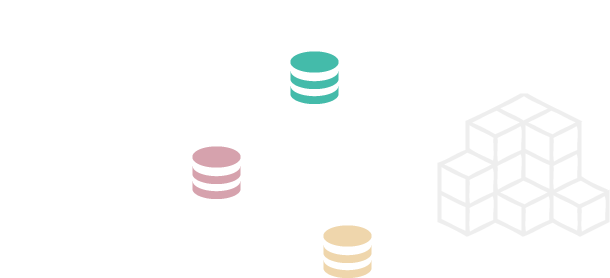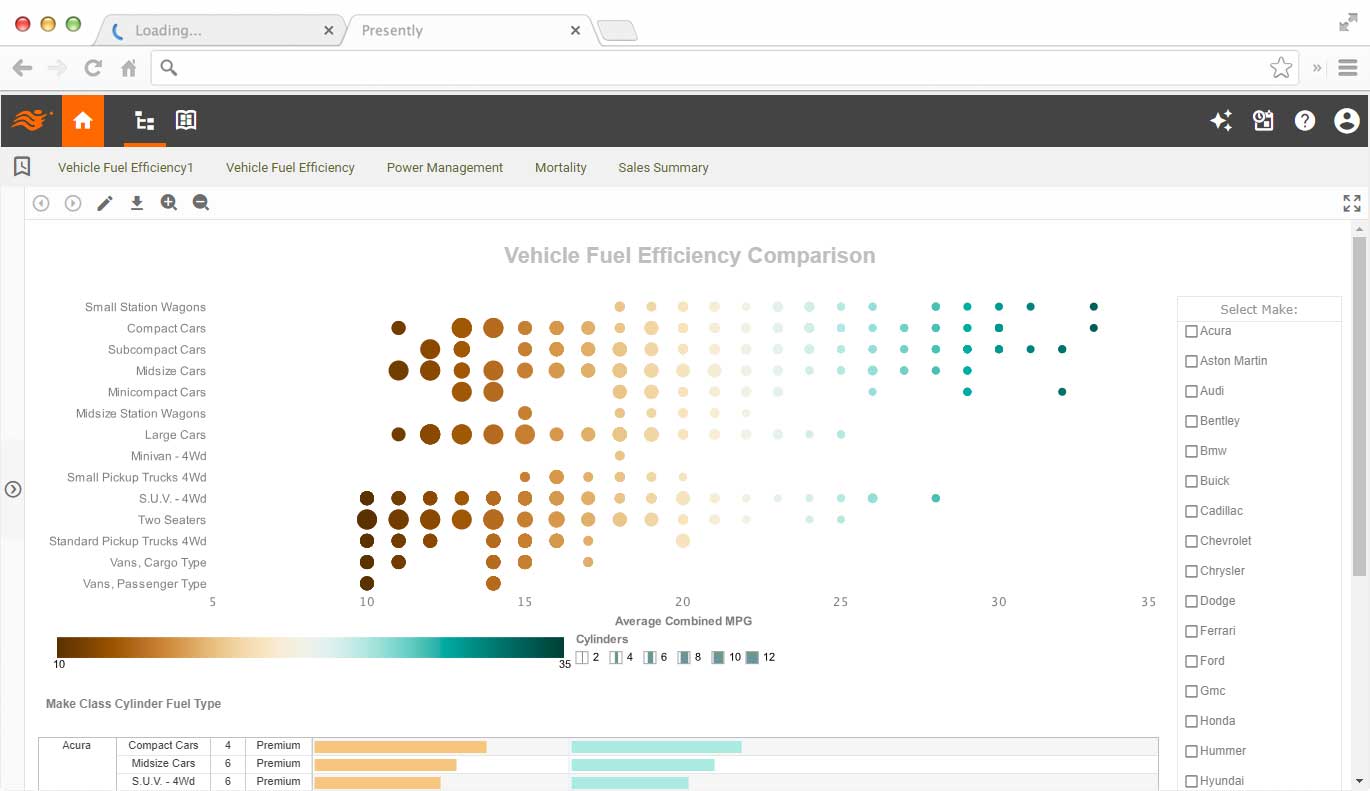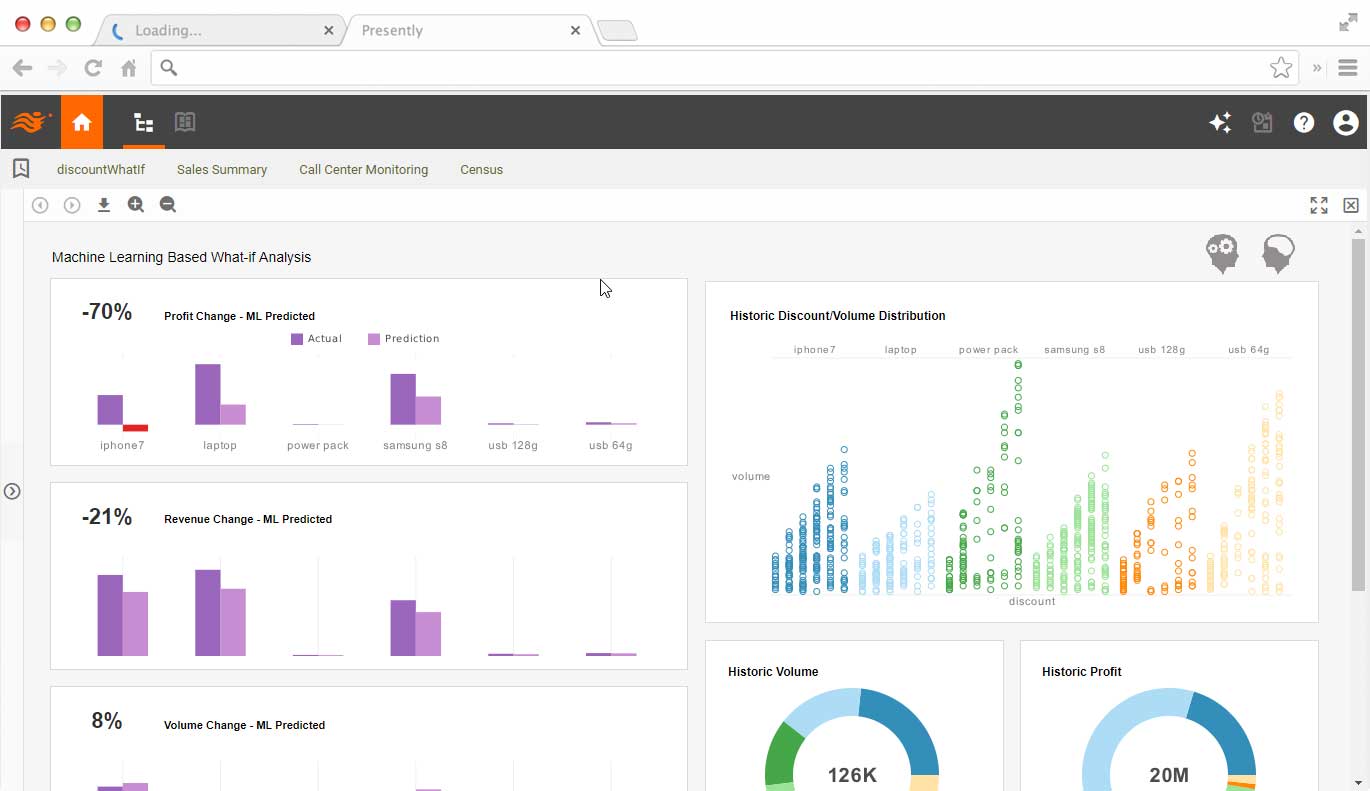Data Warehouses
InetSoft's data intelligence software has built-in, optimized data access for various types of data warehouses. Modern column-based data warehouses and long-established OLAP data warehouses are both well supported.

Visual Analytic Dashboards for Data Warehouses
InetSoft's visual analytic and data mashup software takes full advantage of data warehouses' processing power. The mashup engine pushes queries and data processing into data warehouses as much as possible but executes them when mashed up with other data. Visual dashboards empower business users with ad hoc analytics that directly tap into data warehouses.

Data Mashup and Data Warehouses
The data mashup engine is a core technology in InetSoft's platform. This technology enables a more dynamic data layer that can quickly adapt to new business needs.
For existing data warehouses, data mashup allows users to combine dynamic business data with core data residing in a data warehouse. This flexibility allows data warehouses to focus on core data that are slow-changing and that have long term value.
When a data warehouse is not available, data mashup can be used as an alternative in many cases. Many data warehouses are created for performance reasons. Given InetSoft's high performance, in-memory data mashup cache, this reason alone will no longer warrant such a big investment. Many times, data mashup can also serve as a precursor for discovering data warehouse needs.
Big Data and Data Lakes - a Data Warehouse Alternative
A data warehouse requires careful design and good ETL processes to populate it. On-going maintenance of such an infrastructure is normally an IT-heavy process. A Big Data-based data lake has become a viable option where raw data is analyzed directly.
InetSoft's data mashup platform is not just a stand-alone engine. It is built natively on the Apache Spark platform. This proven high-performance, in-memory platform is capable of churning through a large amount of data. InetSoft's data intelligence application not only provides intuitive visual analytics as dashboards and reports, but it can also be configured with a built-in Spark cluster to scale limitlessly.

Why InetSoft Is a Good Visual Analytics Solution for Data Warehouses
Data warehouses serve as the backbone of enterprise analytics, consolidating massive volumes of structured and semi-structured data from disparate sources. To unlock the full potential of these repositories, organizations need a visual analytics solution that not only connects seamlessly but also scales, performs, and adapts to changing business logic. InetSoft’s visual analytics platform stands out as a particularly strong choice for organizations running data warehouse environments, offering flexibility, efficiency, and advanced functionality tailored for modern architectures.
Below are key reasons why InetSoft excels as a visual analytics solution for data warehouses:
- Native Connectivity and Data Federation: InetSoft connects directly to virtually all major data warehouses—such as Amazon Redshift, Snowflake, Google BigQuery, Microsoft Azure Synapse, and traditional systems like Oracle or SQL Server. Its federated query engine allows users to join and visualize data across multiple sources without physically moving or duplicating it, eliminating the need for complex ETL operations.
- Data Mashup Engine: A signature feature of InetSoft is its powerful data mashup layer. It lets analysts blend data from multiple warehouse schemas or external APIs on the fly. This enables cross-domain analysis—combining financial, operational, and customer data within a single visual workspace—without compromising performance or data integrity.
- Performance Optimization Through Caching: InetSoft’s intelligent caching mechanisms drastically reduce query latency, particularly for dashboards that access large or frequently queried warehouse tables. It can pre-aggregate data or cache computed results, ensuring smooth visualization experiences even under heavy concurrency or real-time workloads.
- Scalable, Distributed Architecture: Built with scalability in mind, InetSoft supports distributed deployments that align perfectly with the parallel-processing design of modern data warehouses. Whether the warehouse resides on-premises or in the cloud, InetSoft can scale horizontally to handle thousands of concurrent users and queries efficiently.
- In-Place Query Execution: Instead of replicating data, InetSoft pushes computations down to the warehouse engine whenever possible. This in-place execution leverages the warehouse’s own processing power—taking advantage of its indexes, partitions, and columnar storage—so visualizations remain fast and accurate, even for terabyte-scale datasets.
- Semantic Layer for Governance: InetSoft introduces a semantic modeling layer that abstracts complex warehouse schemas into business-friendly views. This empowers non-technical users to create visualizations without needing to understand SQL joins or schema relationships, while still maintaining strict governance and consistency across the enterprise.
- Role-Based Data Security: InetSoft’s security model integrates tightly with existing identity and access systems, supporting row-level, column-level, and object-level permissions. This ensures that data exposed from the warehouse adheres to corporate security policies and compliance mandates such as GDPR or HIPAA.
- Embedded and Self-Service Options: InetSoft provides both self-service analytics and fully embeddable dashboards. For developers, its robust API layer makes it easy to integrate warehouse-driven analytics directly into existing enterprise portals or SaaS applications. For business users, the drag-and-drop designer enables rapid exploration of warehouse data without IT intervention.
- Advanced Visualization and Predictive Analytics: InetSoft goes beyond standard charts by offering rich, interactive visuals, geospatial mapping, and integration with predictive modeling tools. Users can build advanced visual stories directly on top of warehouse data, helping organizations move from descriptive to prescriptive analytics with minimal friction.
- Hybrid Cloud and On-Premises Flexibility: As data architectures evolve, InetSoft supports hybrid scenarios—pulling from both on-premises and cloud-based warehouses in real time. This flexibility ensures organizations can modernize their data stack at their own pace without disrupting analytics workflows.
InetSoft bridges the gap between massive, complex data warehouse environments and the users who need actionable insight from them. By combining direct connectivity, high performance, and developer-friendly embedding capabilities, it transforms static data repositories into dynamic, interactive decision-making platforms. For enterprises seeking both governance and agility in visual analytics, InetSoft’s approach offers a blend of technical sophistication and accessibility that few competitors can match.
More Resources About Data Warehouses
Data Warehouses Still Necessary - The Value of Data Warehouses: Data warehouses serve several vital functions that make them an essential component in many organizations: Data Integration and Consolidation: They are designed to aggregate data from various sources, transforming it into a consistent format. This is particularly crucial in organizations with diverse data sets from different departments or systems. Performance and Query Optimization: Data warehouses are optimized for complex queries and analytics. They use techniques like indexing and data partitioning to ensure that even with large datasets, queries can be processed efficiently...
Benefits of a Data Lakehouse - The data lakehouse's function as a centralized data store is at its core. A data lakehouse, in contrast to conventional compartmentalized techniques, gathers all of an organization's data, both organized and unstructured, into one readily accessible area. This centralization facilitates a more streamlined and effective data management process by making it easier to obtain and analyze data from many sources. Organizations may have a thorough understanding of their information environment and make better decisions by dismantling data silos...
Consistent Customer Data Across The Enterprise - That is also being called conforming dimensions for those that have been involved in data warehousing and data modeling. CDI, or Customer Data Integration, is consistent customer data across the enterprise. Again, this is a not new concept, but it is a new name, CDI. Remember 360 degrees around the customer, customer relationship management folks? The CRM folks keep inventing new terms of integrating customer data, because they have to deal with customer applications such as Call Center Campaign Management and Sales Force Automation that tend to keep customer data fragmented...
